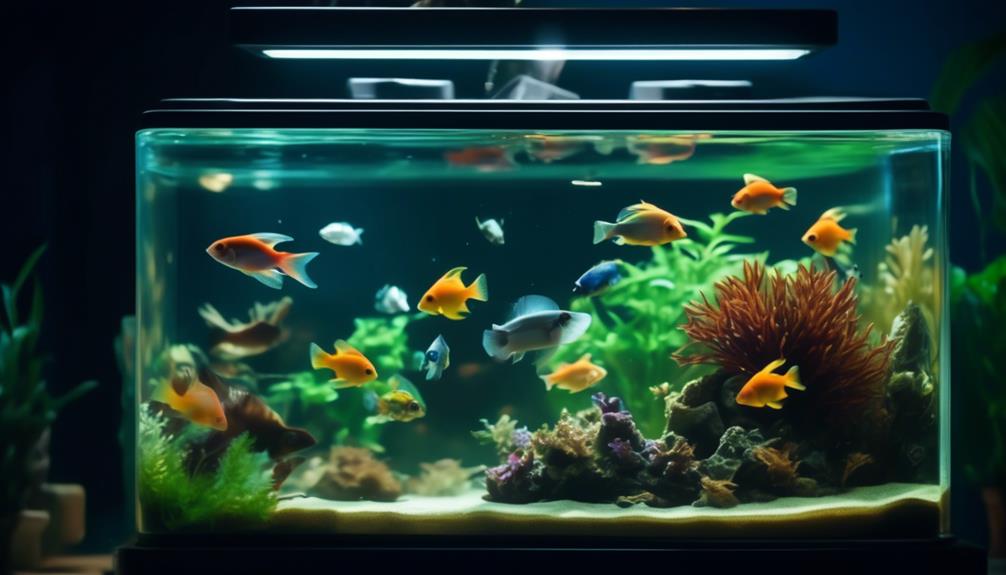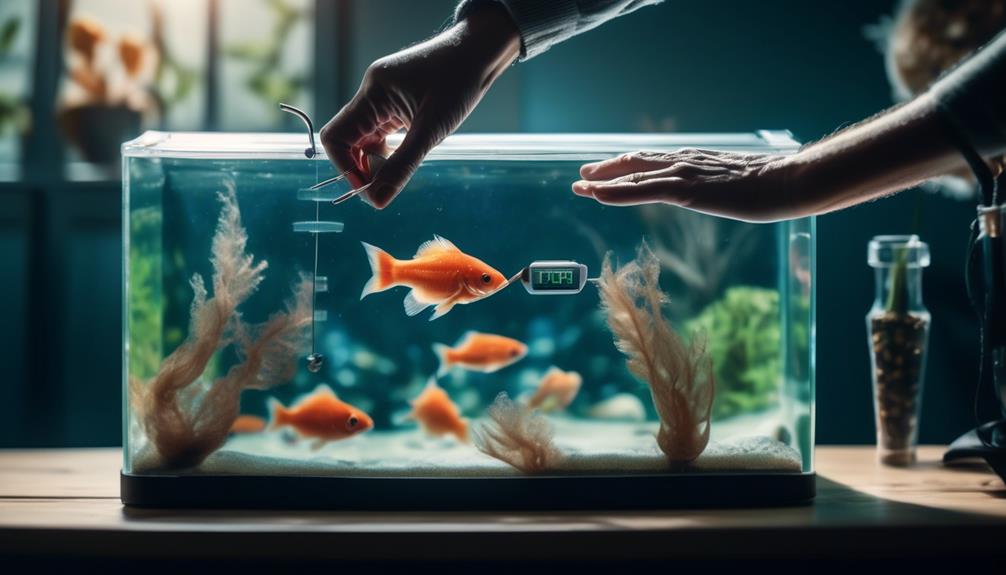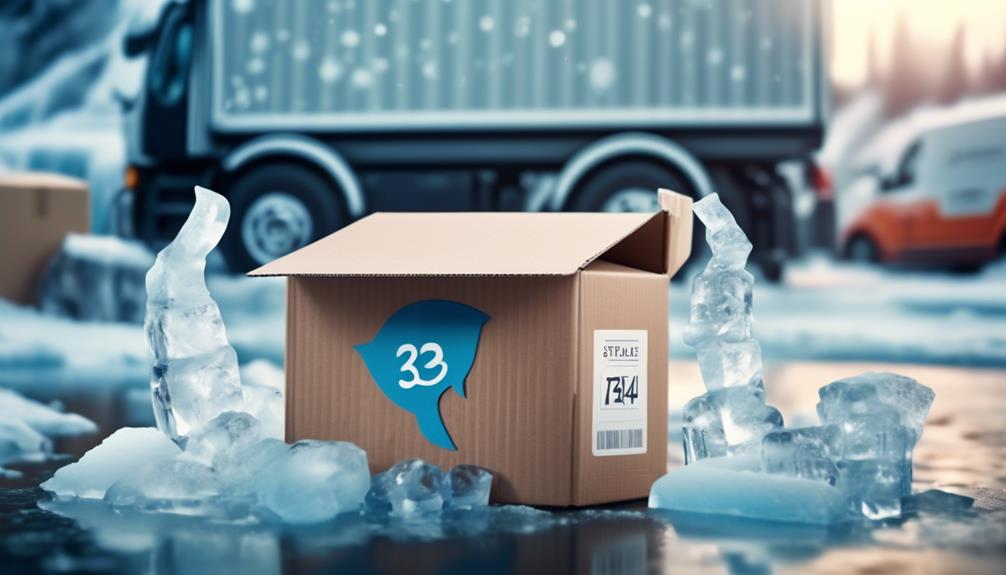Navigating the ocean of online fish retailers is akin to setting sail on uncharted waters; one must be equipped with knowledge and a keen eye to ensure a successful voyage.
As a seasoned fish keeper, I’ve come to realize that there’s more to ordering aquatic pets than clicking ‘add to cart’. For starters, I always anchor myself with thorough research on the species, ensuring they’re a good fit for my tank’s community and environment.
It’s crucial to find a reputable dealer who offers healthy, ethically sourced fish, which isn’t always as straightforward as it seems. I’ve also learned that preparing my aquarium for new arrivals is a non-negotiable step if I want to avoid the stormy seas of fish acclimation issues.
And speaking of arrival, understanding the seller’s shipping methods and timelines is a must to avoid any unwelcome surprises. I’m here to share these pearls of wisdom so you, too, can have a smooth sailing experience while stocking your aquarium from the comfort of your home.
Mike’s Thoughts

Make sure your tank’s ready, know those shipping deets and ease your new pals into their home sweet home.
Stick with these tips, and you’ll be all set for a swimmingly successful online fish adventure.
Happy fishkeeping!
I’ve put a bunch more detail below that expands on the topic, so feel free to read on and leave a comment if you have any questions or reach me on Facebook.
Research Before Buying
Before clicking ‘buy’ on that exotic angelfish or neon tetra, it’s crucial to research the fish species and the online shop you’re considering.
I always start with comparison shopping to see who offers the best deal and healthiest fish.
It’s not just about price; I look for shops that know their stuff about water conditions and fish care.
Reading customer reviews is a must for me. They tell me heaps about the shop’s rep. Did folks get their fish on time? Were they healthy? Happy customers usually mean I’ll be happy, too. I’ve learned that a shop with bad reviews is a no-go. Why take the risk, right?
It’s all about making sure my new finned friends arrive safe and sound.
Prepare Your Aquarium

Having done your homework on the fish and the seller, ensuring your aquarium is ready to become their new home is equally vital. A proper aquarium setup is more than just filling a tank with water. Here’s a quick checklist to make sure everything’s on track:
- Cycle the Tank: Make sure your tank’s been up and running for a while, with a filter fostering good bacteria for a healthy environment.
- Check Water Quality: Test the water for the right pH, nitrate levels, and temperature to match the needs of your new fish.
- Ensure Water Circulation: A good pump and filter system are crucial for oxygenation and preventing waste buildup.
Understand Shipping Policies
When you order fish online, it’s crucial to clearly understand the seller’s shipping policies to avoid any surprises upon delivery. You’ll want to know when they ship, how they handle shipping delays, and what packaging considerations they’ve taken to ensure your aquatic friends arrive safe and sound.
I always check if the seller offers tracking information so I can keep an eye on my shipment’s progress.
If there’s a hiccup, I’ll be in the know. Also, I find out if they use insulation and heat or cold packs, depending on the weather. This step is vital—fish are sensitive creatures, and extreme temperatures during transport can be harmful.
I’ve learned that being well-informed about these policies is key to a successful online fish order.
Getting Your New Fish
When your fish arrive in the mail, pick them up quickly. Plan to be available on the delivery day so they’re not in the mail for too long, which is stressful for them.
The store ships on Monday to avoid weekend delays, meaning they usually take three to five days to arrive. I chose faster shipping, so my fish arrived in just two days.
They won’t be out for delivery all day if you have them sent to your local post office. The post office will call you when your fish get there, then you can go pick them up.
Keeping New Fish Safe
It’s best to keep new fish alone at first in quarantine.
This helps to see if they are healthy without risking the other fish. It can last a few weeks or months.
If you skip quarantine, like I did once, sick fish might infect others. Resulting in a lot of work to fix it.
Now, I make sure my new fish are eating well and are disease-free before mixing them with my other fish.
Remember always to use clean equipment for the new fish to avoid spreading sickness between them.
Proper Fish Acclimation

Properly acclimating your new fish to their aquarium is critical to ensure they transition smoothly into their new home. Here’s how I do it:
- Temperature Adjustment: I start by floating the sealed bag in the aquarium for about 15 minutes to match the water temperatures.
- Drip Acclimation: Next, I use a drip line to slowly introduce tank water into the bag over the course of an hour. This gradual process helps the fish get used to the pH and mineral content.
- Ammonia Neutralizer: Before adding the fish to the tank, I add a few drops of ammonia neutralizer to the aquarium to protect them from any potential ammonia spikes.
This simple yet effective approach helps my new swimmers adapt without stress.
Feeding Your New Fish
Feed your fish the same food they had before, but wait a day or two after they arrive before you start.
This gives them time to settle in because the trip might make them feel a bit sick.
Begin with a small amount of the familiar food, then over a few weeks, you can try introducing different foods.
Keep doing this until you’re sure they are healthy and then they’re ready for their new tank.
Frequently Asked Questions
Is It Safe To Order Aquarium Fish Online?
Ordering fish online isn’t inherently risky. Reputable sellers, from individual breeders to large farms, typically know how to ship fish securely and often provide live-arrival guarantees.
Look for clear shipping methods, proper packaging, temperature control, and quick delivery. Avoid dealers who seem uncertain or secretive about their shipping process.
The health of fish from online dealers can be uncertain, similar to those at local fish stores (LFS).
However, reliable dealers won’t sell sick fish, and even healthy ones can develop issues after transport. Trust is essential when dealing with a new dealer.
Research their reputation, consult forums, seek recommendations, and communicate with them directly.
If satisfied, and the price is fair, consider making a purchase, but quarantine new fish to reduce risks.
How Can I Verify the Health and Quality of the Fish?
I’ll check fish reviews and inquire about shipping methods to ensure I’m getting healthy, quality fish. It’s a simple step that really informs my purchase and gives me peace of mind.
What Steps Should I Take if the Fish Arrive Dead or in Poor Health?
I will contact my vet immediately if my fish arrive dead or sick. I’ll follow the unpacking protocol, take photos, and then contact the store immediately to discuss their refund policies and sort out a replacement or refund.
Are There Any Specific Quarantine Procedures I Should Follow?
I always follow a strict quarantine routine to prevent disease. The acclimation process includes separate tank isolation and careful monitoring for any signs of illness before introducing new fish to my aquarium community.
How Can I Ensure the Online Retailer Sources Their Fish Ethically?
To ensure ethical sourcing, I look for fish certifications and demand retailer transparency. This shows commitment to sustainability and reassures me that my aquatic friends come from responsible practices.
What Common Mistakes to Avoid When Feeding Newly Acquired Fish Bought Online?
I avoid overfeeding my new fish and stick to a set feeding schedule when I feed them. I also research their dietary needs to see if they need any nutritional supplements for optimal health.
